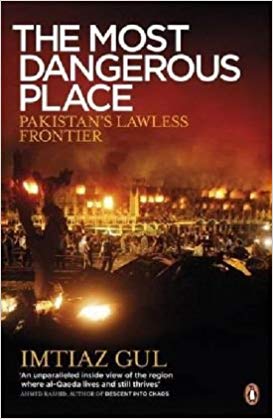The Most Dangerous Place : Pakistan’s Lawless Border by Imtiaz Gul (Penguin Books)
There was a time when I was fascinated by the drug trade and would buy and read all sorts of books on the subject. I would read books about the “Golden Triangle”. I would read about the leaders of the drug smuggling trade - General Khun Sa of the Shan State in Burma, Pablo Escobar and Jorge Ochoa, the founders of the Medellin Cartel in Columbia, just to name a few major figures.
Then I read the news of the Rwandan Genocide in 1994 and saw the photography books by Magnum photographer,Gilles Peress. This spawned my interest in reading books about crimes against humanity. The Holocaust during World War 2, the rise of Pol Pot and the Khmer Rouge, ethnic cleansing in Kosovo, the Tigers of Tamil Eelam recruiting children to fight in their wars. Sometimes I would imagine what it would be like to travel to such dangerous places. This led me to read Robert Pelton Young’s book The World’s Most Dangerous Places which is currently in its 5th edition.
My interest in the drug trade and crimes against humanity would be shelved after the rise of terrorism, Al Qaeda, and Osama bin Laden. However, most of the books I would read on the subject were by Westerners who are not the most objective voice when talking about the rise of Islamic militants and whom I believe were just as ignorant about the countries of Afghanistan and Pakistan.
While the U.S. increased the “war on terror” and put a bounty on bin Laden’s head, our country was having an even more difficult time getting the cooperation of another country - Pakistan. That’s the main focus of this book. Our government believed that bin Laden was hiding out in the country’s tribal region of Waziristan which shares the border with Afghanistan. Our government were also weary of the Pakistan’s intelligence agency, the ISI or Inter-Services Intelligence because they believe many members supported the militants and let them handle problems in the area as proxy agents.
In this book, we get an even better insight into the rise of Islamic militancy from a Pakistani native who is also a journalist and has been reporting on the area for over two decades. Gul not only interviews Pakistani government officials and members of ISI, he also interviews militant leaders and their followers. You will learn more about the tribal areas and get a better understanding of how ultra-conservatism and a lack of wealth and education contributes to the rise of militancy. Gul also informs us why the Pakistani government is complacent when it comes problems arising in these lawless areas.
The appendix in the book gives you a list of militant leaders, the group they are a part of, and what tribal region the strength is located. We may not hear much about Al Qaeda in the news after bin Laden’s death, but Islamic militancy continues to grow and expand and now the most current threat against democracy is Isis or the Islamic State. I can only wish for a future where we really will have world peace, but as long as there are extremists, Islamic, Christian, or otherwise, we need to stay vigilant and learn as much as we can to strive to make a better world.
